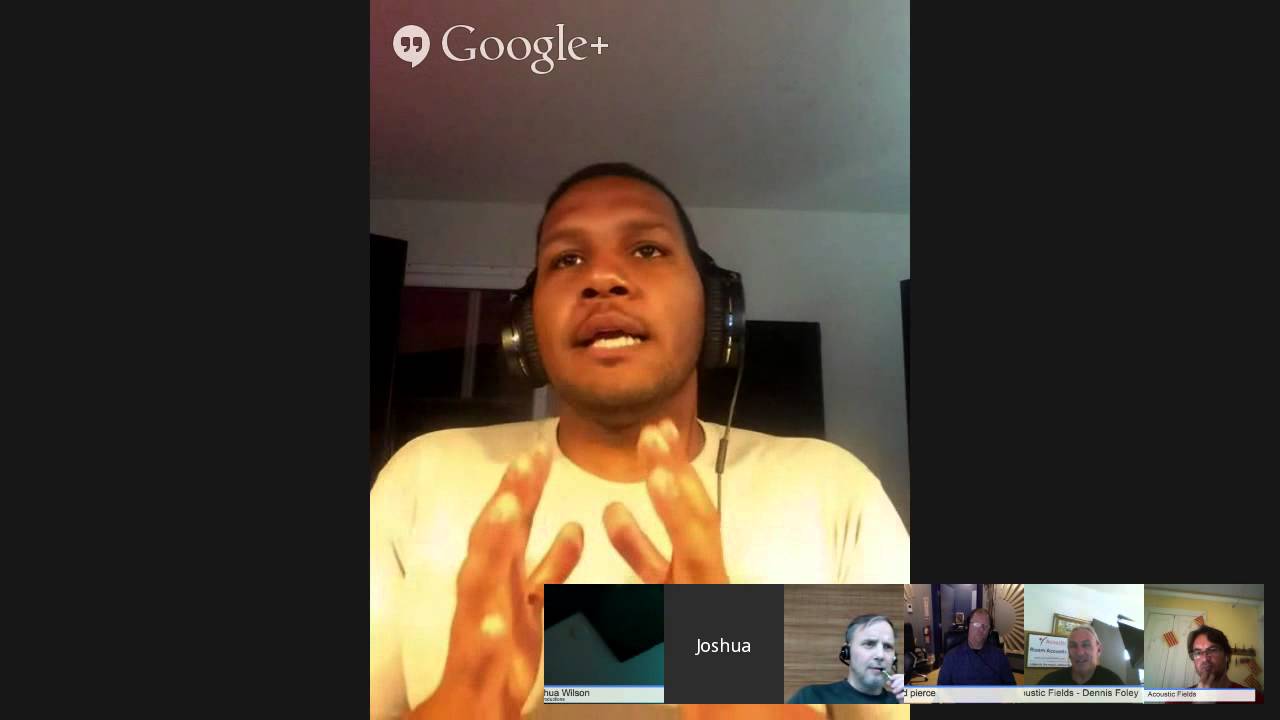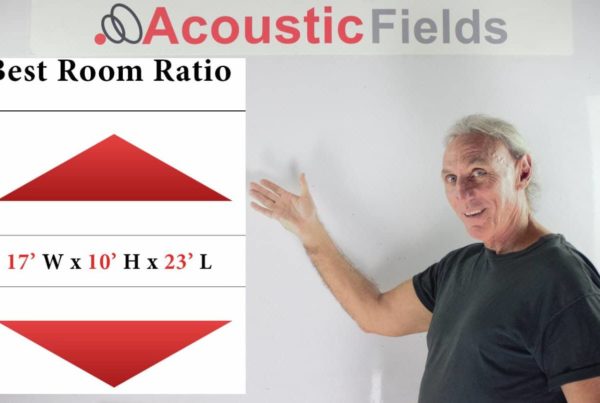In a recent Google Hangout I got together a bunch of experienced and talented audio engineers to help bridge the gap between what you are hearing as an engineer and how the room is causing that problem. We tried to cut through some of the confusion between “mix sound” and “room sound”. The following video and transcript comes from one particular section where we addressed the question “Is the EQ curve the sound of your room?”. If you would like to see the full hour and a half discussion you can see the video further down the page.
Joseph Baffy (JB): I have this concept I call everything is an EQ, which basically means everything has an EQ curve. Break it down to molecules, you know running around their little nucleus thing right? You’ve got the electrons and you got a piece of hard oak wood that actually vibrates, it’s got a resonance to it. Alright now that doesn’t really mean anything to the average guy but when you say something like ‘Alright we captured this piano” and alright let’s just say I captured the piano and I didn’t know how to take the sound of my room into account during that capture. Is it because I don’t understand the EQ curve of my room? Is that a way to say, think about it? Is that a way to picture that?
Dennis Foley (DF): Well it’s a way to quantify it. Yeah it’s a way to quantify it and look in the real world situations that we deal we can’t run a response curve on every room. I mean we go to a gig there’s a piano, there’s a vocalist he wants to record, you know we don’t have that option. So we need a better understanding of how the room impacts our recordings and how we’re going to deal with those issues and it’s just amazing to me when the engineer gets the sound of the instrument correct and you know that he’s taken a lot of care and consideration and looked at all the variables involved.
JB: Okay so I’m the same, trying to bridge the gap in terminology. I don’t think the average guy can look at an equation and say “You know I’ve got a note and a piano and it’s the middle C and how I can look at a frequency chart” and say “Geez that’s 261 hertz but maybe that I don’t know what that means to me” Okay I look and think “how could we create a chart or visual aid maybe to help someone equate the sound of their room to an EQ curve to and how much impact that has on what they hear?” I’ve been thinking about this the whole week because I look at different kinds of equations and charts and graphs and I can’t even come up with anything all that simple other than the keys on the piano with the frequency of each note and how much do you know in your own mixing space? I’m going to pass the mic because now my brain is going faster than my lips.
Joshua Wilson (JW): I think it’s a situation that’s going to be almost impossible to create a standard chart for anything like that because every room is different, every engineer mixes their mixes different, they hear music different. All three of us could have the same song and all of us would create a mix and all three of them will sound different because it’s our perception of the music and for me I tried my best to trust my room as much as I can because I don’t want to over-think my mixing. I don’t want to think ‘Oh well you know there’s this good up here and there’s this good up there’. I just try to trust as much as I can and then, as you work more and more in an environment you’re going to get used to how that environment sounds.
So you’re not going to be able to create a chart like that because if I would just go to another studio, a larger studio and have that live room with the piano in it, I’m not going to go in there thinking about EQ, the curve whichever, the room or whatever, I’m going to go in there and I’m going to do what I do here and listen to the music just the way that I do. You’re really trusting the room to provide you with the sound that you’re trying to achieve. So it’s a hard thing to do creating something standard.
You have charts where instruments are supposed to be and frequency ranges they fall in and that’s basically the best you are going to be able to get because if you know where the instrument is supposed to be then obviously you’re going to be working around a room but you can get a better understanding through where you need to place it. Just having a chart for a room that’s way too many variables to even have it as a standard.
JB: When I hear you talk, I hear you say you are trusting the room which I’m equating you’re trusting your ears and you are experienced. I’ve seen your set-up, you posted a video and looks really nice. So you have enough experience to hear the difference between your room and any other room you go to and you’ve just kind of got this. You’ve got that knowledge inside of your head inside your ears that you can hear the difference kind of automatically and work with it. Is that kind of what you’re telling me, right?
JW: Yeah I feel like no matter where you go. you’re always going to mix the same and that’s what I’m saying, you’re going to trust the room that you’re in, you’re going to trust the environment that you’re in, to provide you… you may hear different, you may hear certain details in another room that you didn’t hear in another room but you’re still going to mix it the same way no matter where you are. So that’s why an artist will have a certain engineer but that engineer might not always be at the same studio but they keep that same engineer because that’s the way that they have their particular sound that they search for in whatever room they’re in. Every engineer has their own sound.
There is too many variables to actually make a standard chart for that. You have to have the room correct so that when you mix the way that you mix it you know that you’re going to get the result that you want.
If you would like to learn more about room acoustics please sign up for my free videos and ebook by joining the mailing list here. I send room tuning tips and things for you to test in your room every Wednesday. They are easy to follow and really help you enjoy more of your music. And if you would like your room acoustic issues analysed for free by me then please fill in the form here and I will be happy to take a look for you.
Thanks and speak soon
Dennis







